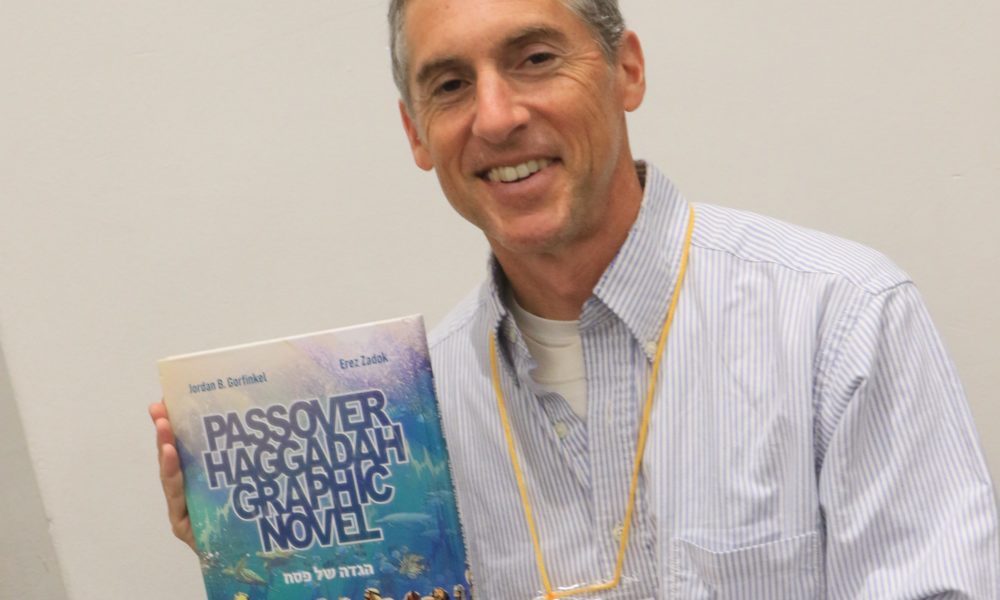Featured Item
From supervillains to superheroes: theories about Pesach’s four children

What do superhero stories and the Haggadah have in common? More than you think, said American cartoonist, veteran DC Comics editor, and producer Jordan B Gorfinkel, aka Gorf, who entertained Limmud audiences with his immersive look at the four children who form part of the Pesach seder.
Having managed the Batman franchise at DC Comics for almost 10 years, Gorf is the man behind Birds of Prey and his series, Batman: No Man’s Land, inspired by the movie The Dark Knight Rises. For Gorf, it’s all about storytelling.
Through his bestselling Passover Haggadah Graphic Novel, Gorf fulfilled his goal of bringing Judaism to life through visual storytelling. The Haggadah is in fact not a complete story or narrative but a compendium of knowledge, he said. Turning it into an engaging story merging words and pictures was the task of his graphic novel. “My mission is to bring out what’s wonderful about what we already have but to make it as accessible and universal as possible,” he said.
Gorf challenged traditional conceptions about the four children in the Haggadah, namely the wise one (the Chacham); the evil or rebellious child (the Rasha); the simple one (the Tam); and the one who doesn’t know to ask (the She’Aino Yodea Lishol).
In understanding each of these children, Gorf turned to the Marvel cinematic universe in the form of The Avengers. Here, the Chacham is seen as the righteous superhero represented by each of the Avengers, whereas the Rasha, in this case the villain Thanos, is the embodiment of evil. The Tam is represented by the leadership of the Avengers, Nick Fury, who sees things in simple black and white. Finally, the one who doesn’t know how to ask can be represented by Groot in Guardians of the Galaxy, whose vocabulary is limited to, “I am Groot.”
“There are more dimensions to understanding the definition of the four children than we may have thought,” Gorf argues. For example, we need to engage the one who doesn’t know how to ask at their level. Perhaps they’re not developmentally ready to ask or are even disabled, we cannot dismiss this child. Furthermore, the simple one may in fact not be simple, their role is possibly not yet defined.
Though the four children represent four different people or four distinct personality types, we should avoid placing them in static boxes. “The exterior doesn’t always fit the interior – the way we present ourselves isn’t necessarily the way that we feel inside,” said Gorf.
For example, the Chacham and Rasha could have similar intentions that manifest in different ways. Applying his theory to real people whether it be in the sports, celebrity, or legal world, Gorf argues that you can place any person into any one of the four child archetypes. “It’s about context, anyone could be anything depending on your point of view,” he said.
We could also apply a psychological perspective, that the four children could represent different parts of our psyche. They are four individuals but also represent one community.
The four children also show character progression, meaning they are capable of evolving – a capability we all have throughout the generations. “All of us are capable of becoming the Chacham, who can light the Jewish future.”
